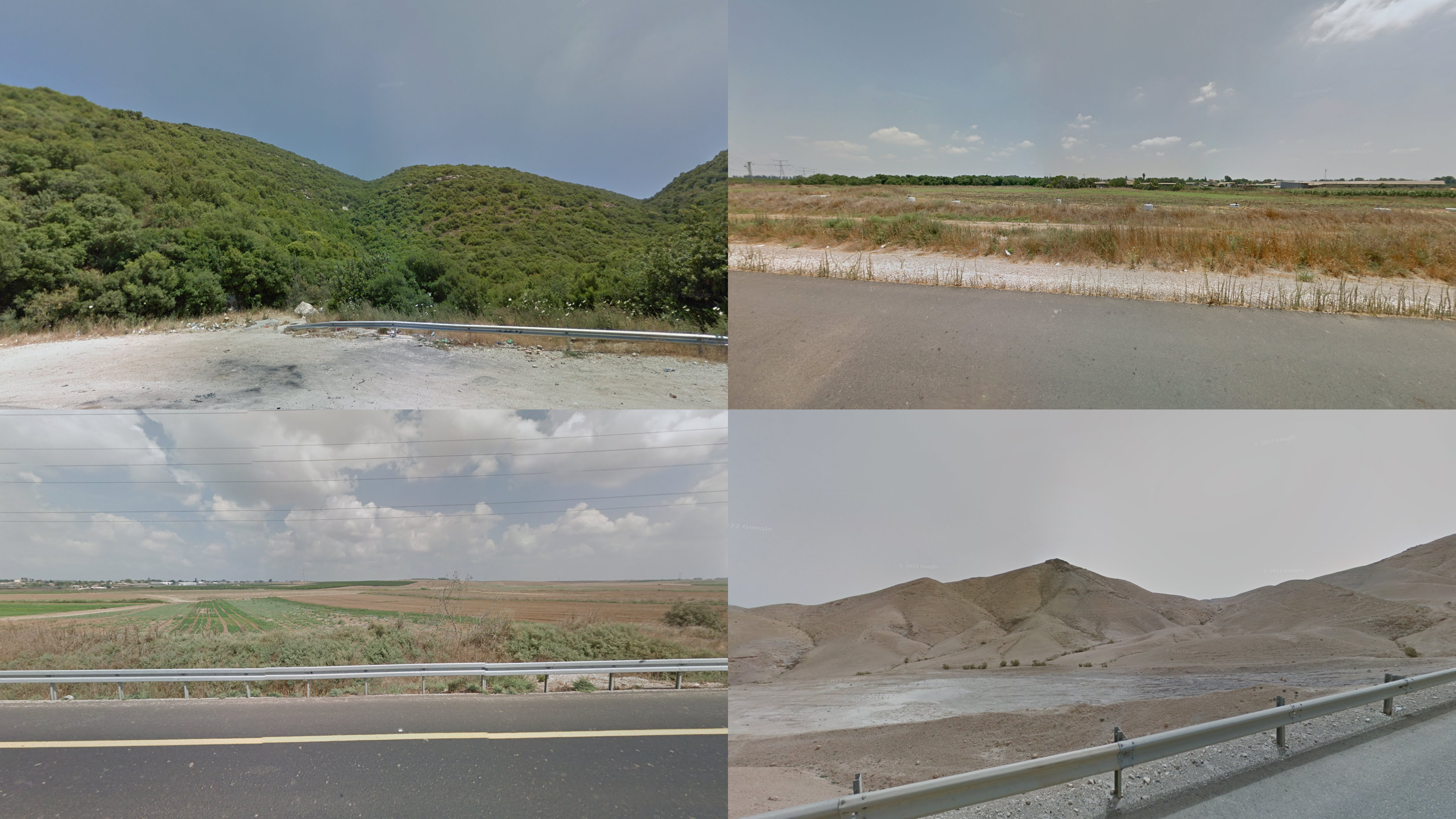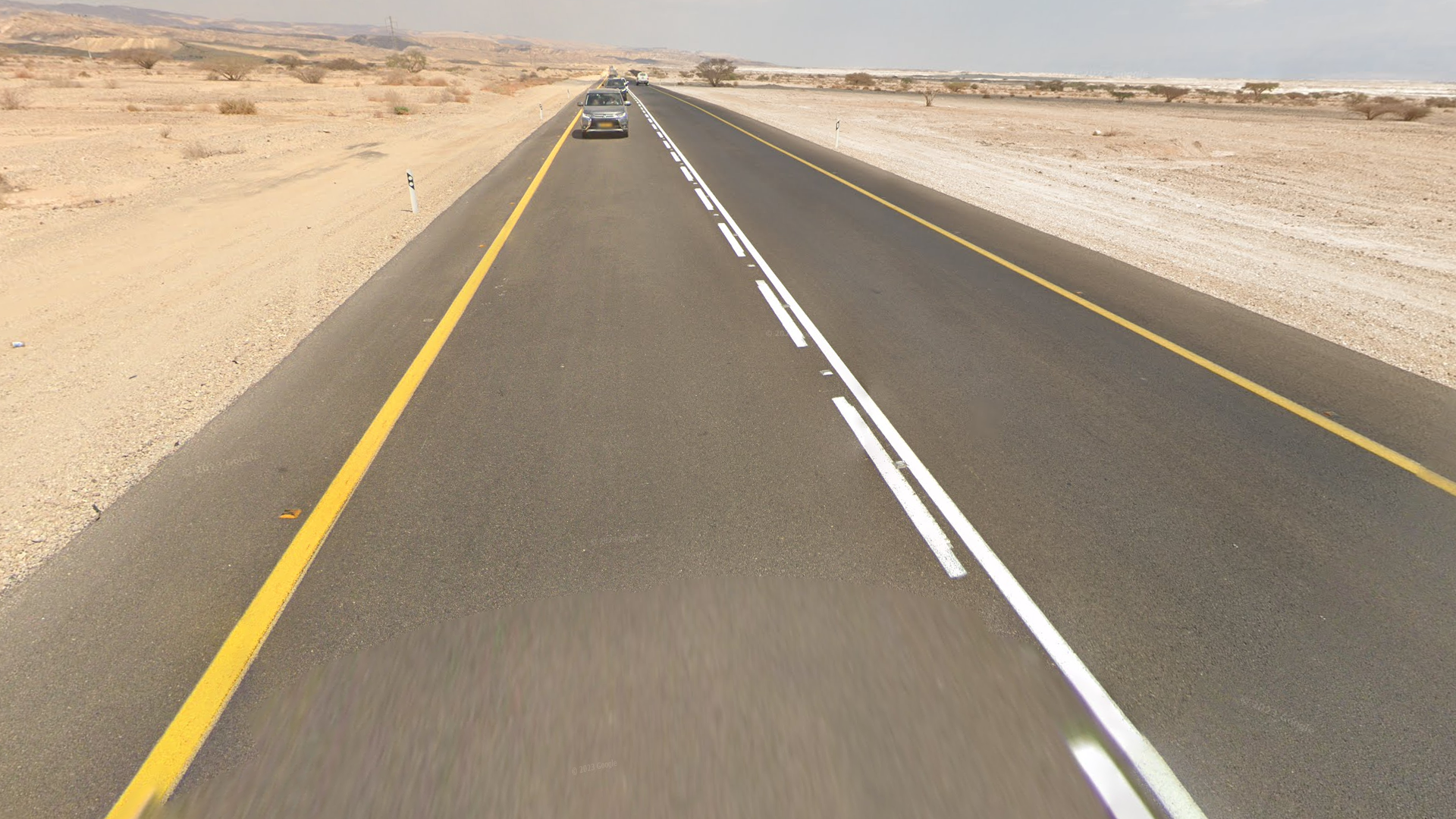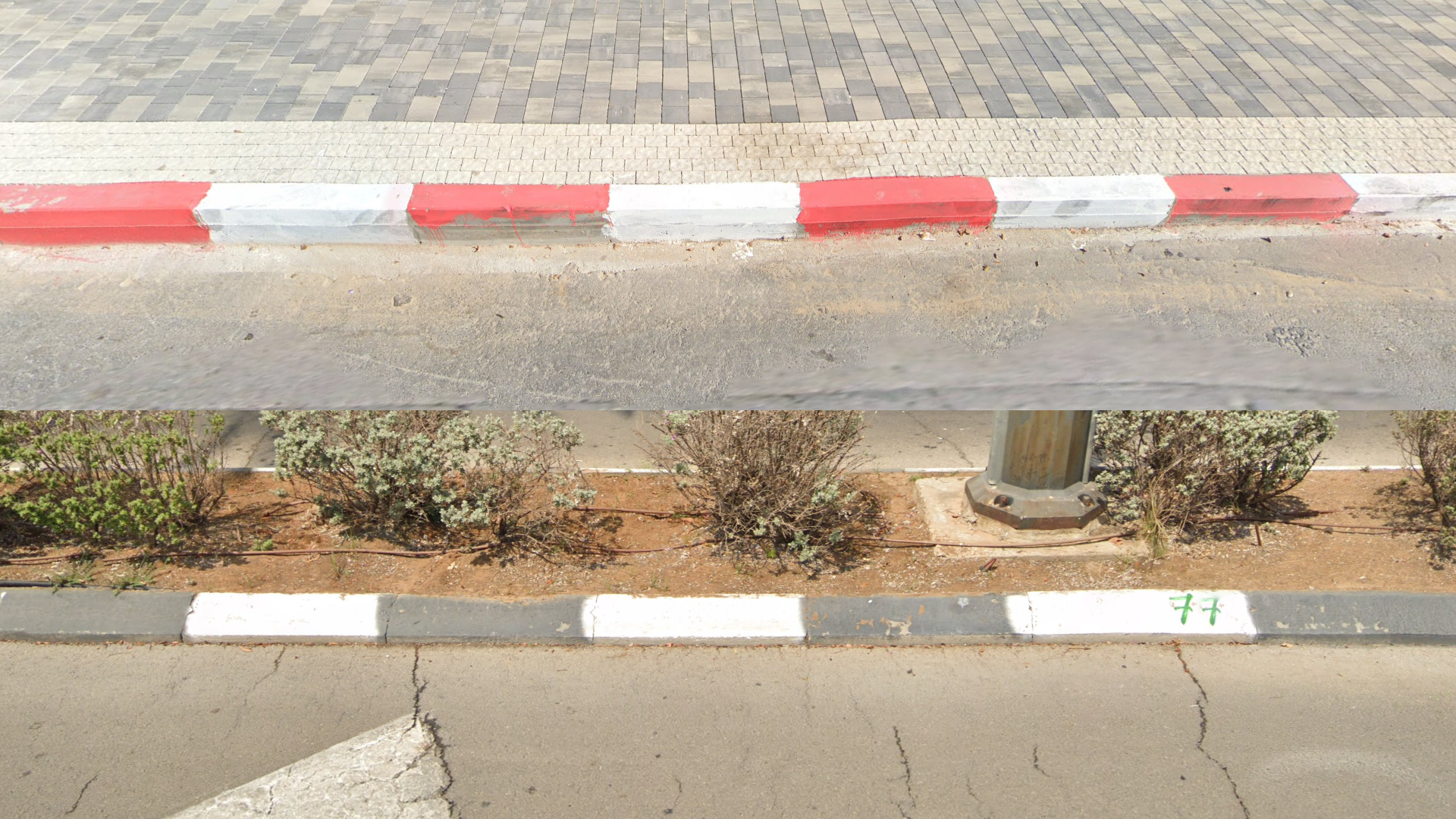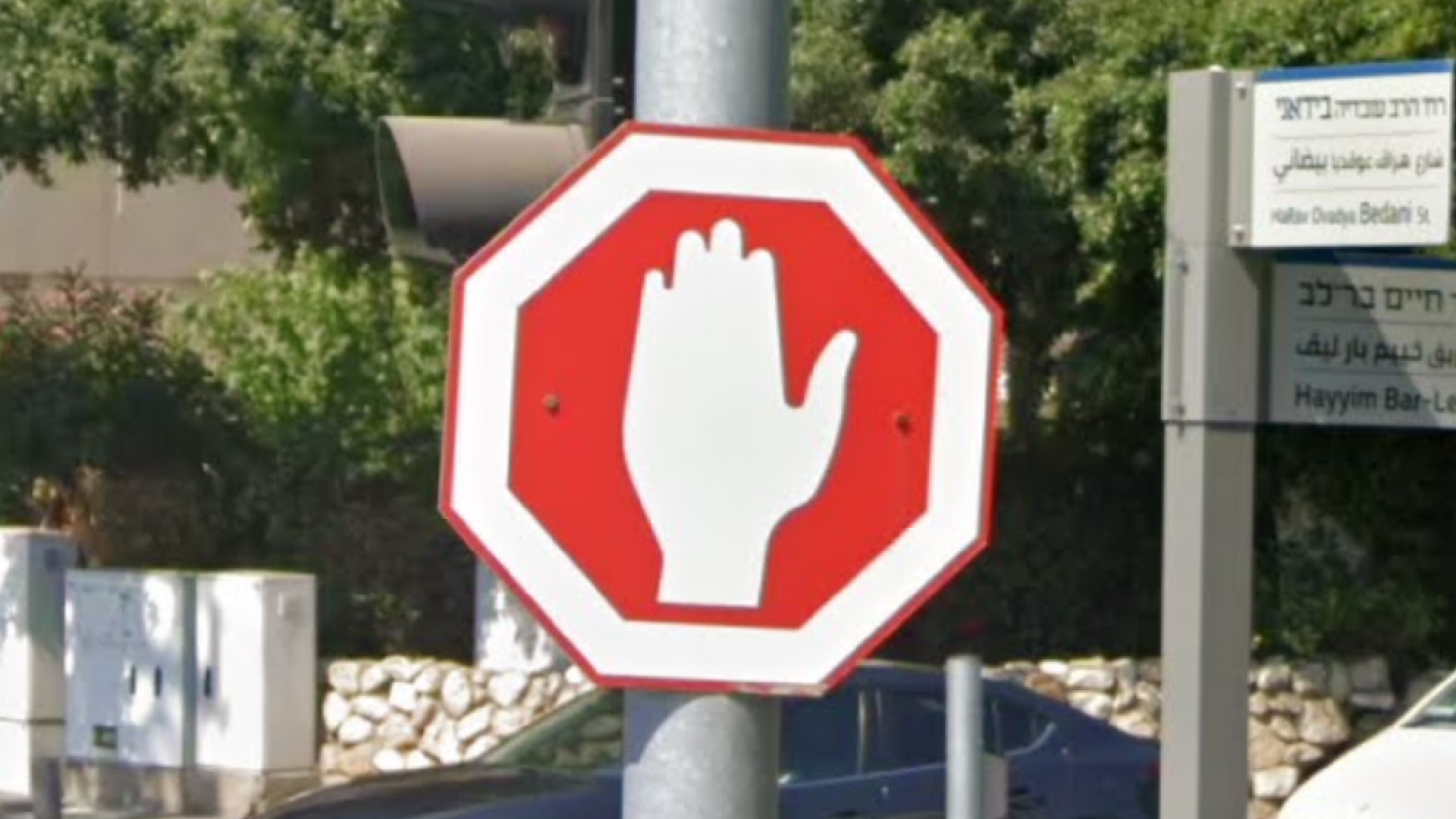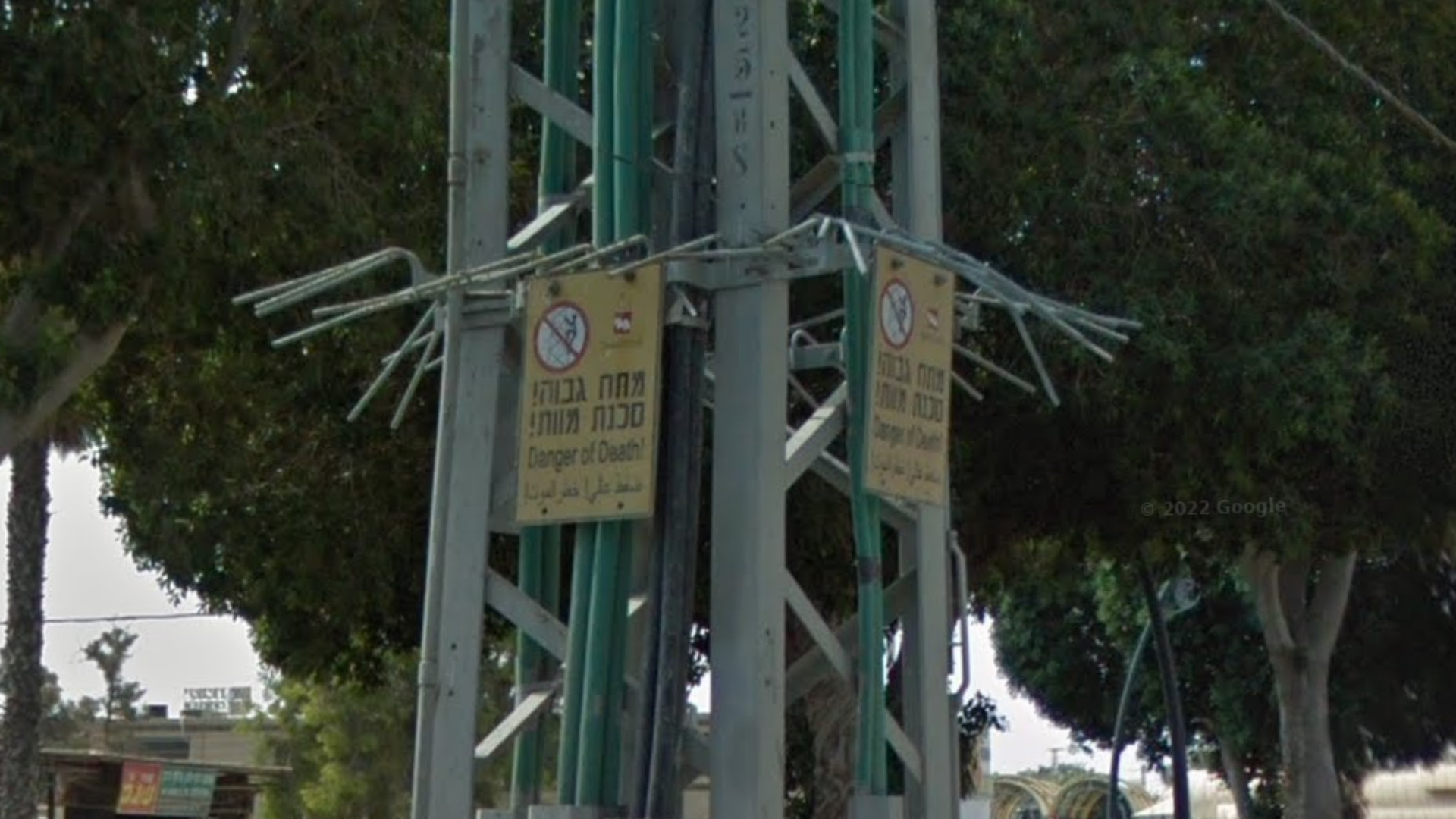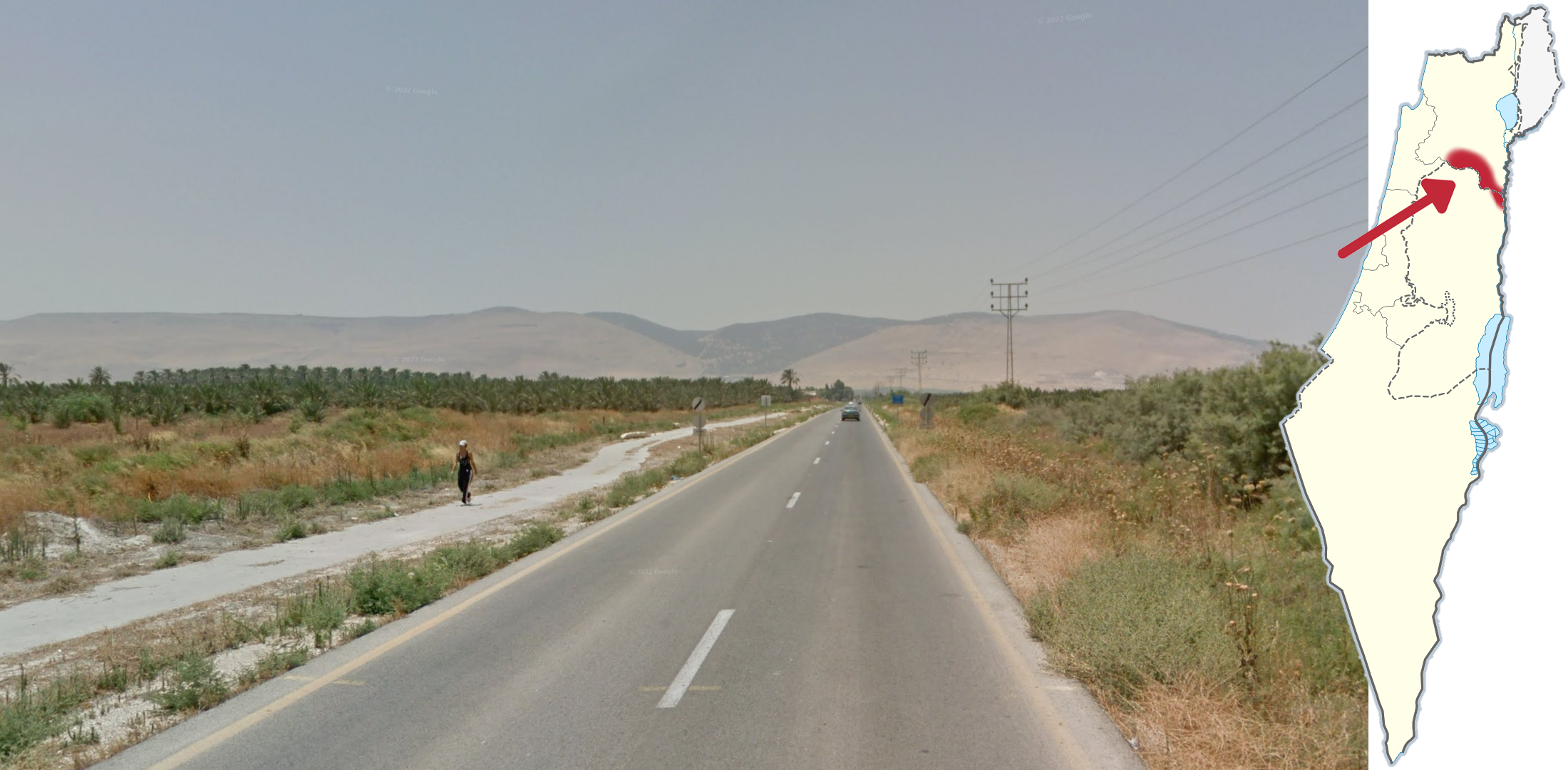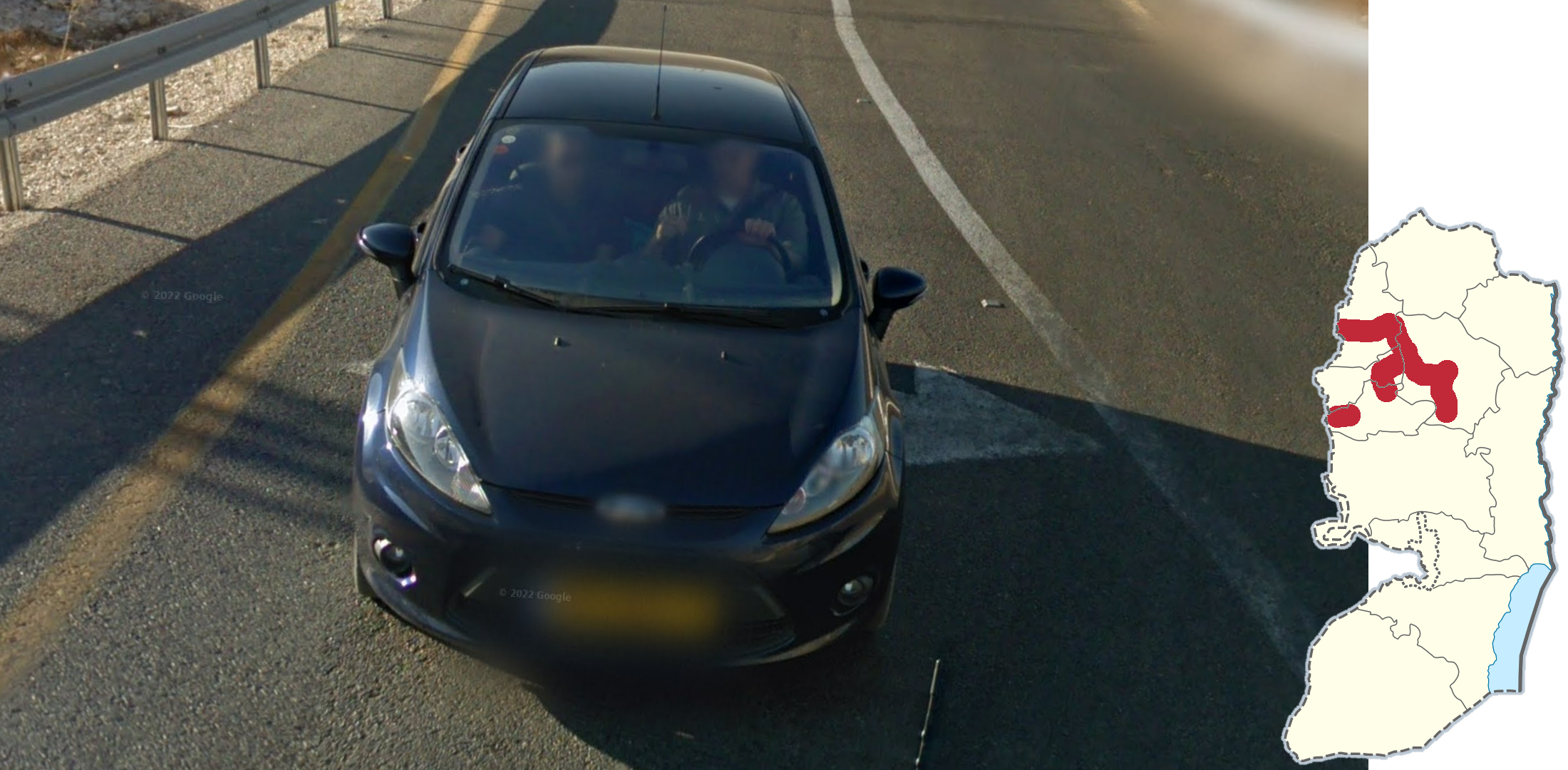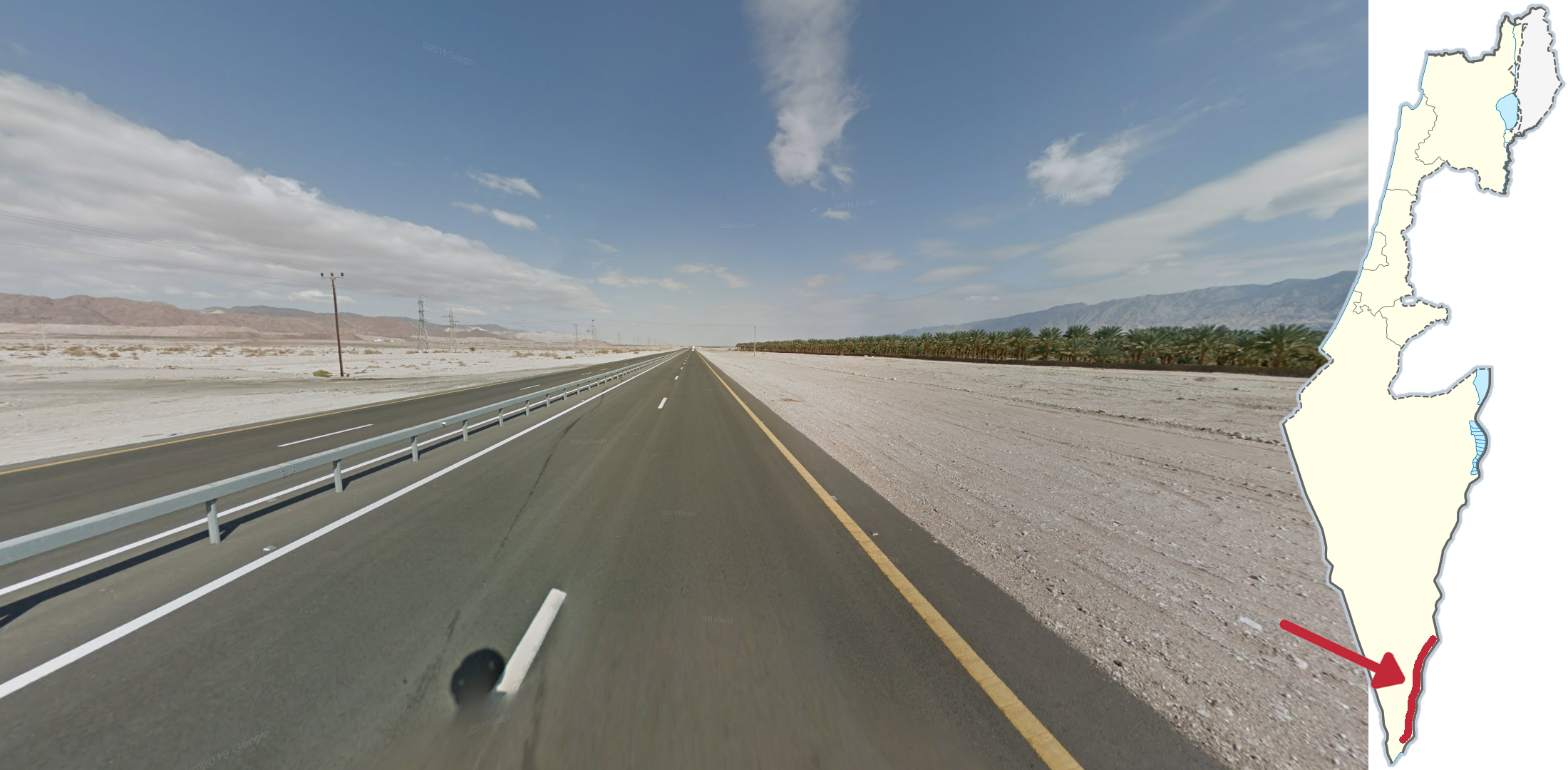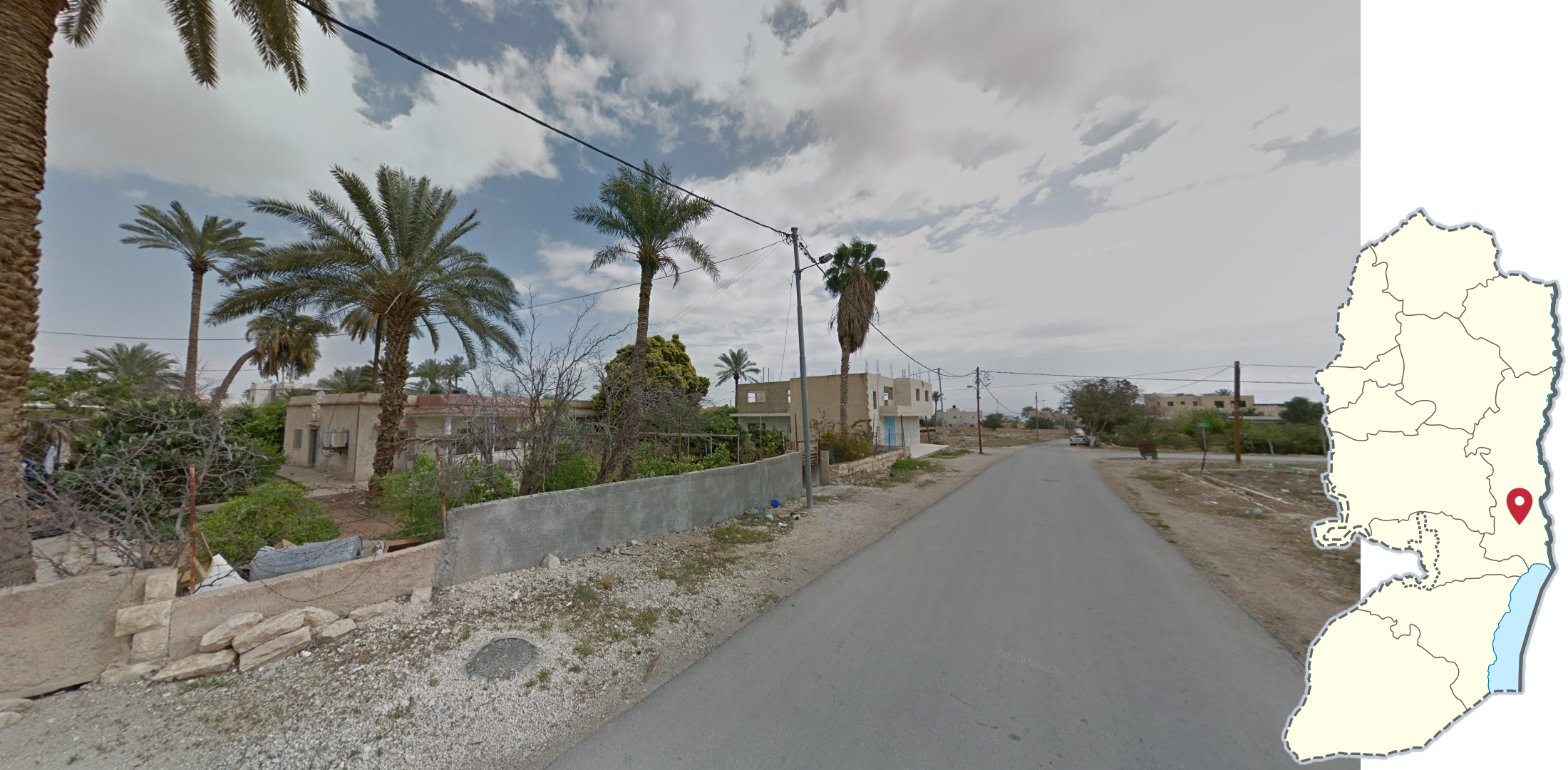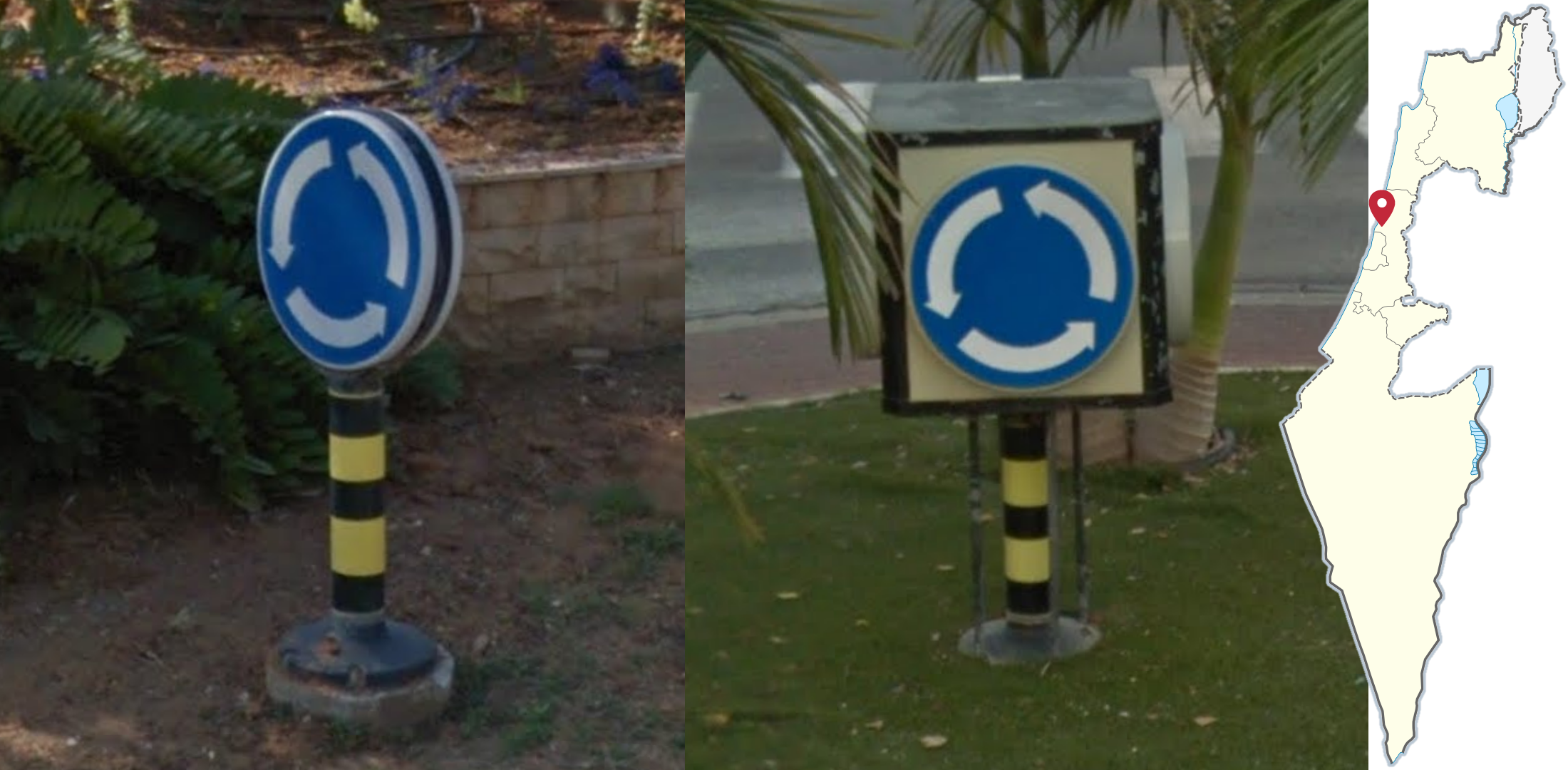
Israel & the West Bank
NOTE: This guide contains tips about Israel, the West Bank, and to some extent Golan Heights, since for the purpose of Geoguessr, they are counted as the same country. The guide is politically neutral regarding the ongoing tribulations. All maps associated with the guide are for demonstration purposes only and the format of the guide was decided with practical in-game use in mind, and is in no way reflective of the political situation.
Most Generation 3 coverage was taken by a black Street View car with a long antenna.
You may also see the black car without an antenna and a silver car with a short antenna.
You will very often see striped kerbs: red and white and fairly commonly black and white.
Red and yellow and blue and white are also rarely found.
The area west of Jerusalem can often look deceptively similar to northern Israel, with green forested hills and some agriculture sprinkled across the landscape.
Two things can occasionally be used to tell the two apart. Firstly, in northern Israel you may occasionally see wide, flat valleys, while the Jerusalem area is always going to be hilly. Secondly, if you see houses made of Jerusalem stone, you are likely to be near Jerusalem.
In Jerusalem and surrounding cities in the West Bank, nearly every building is built with the same type of material, called Jerusalem stone. Beware that the stone will look much smoother on newer buildings.
NOTE: Single houses with the same material can be found in other towns and cities.
Mount Carmel is a long mountain ridge, going northwest to southeast, near the city of Haifa. From the northeast, it can easily be recognised by its direction and size.
There is also a lot of coverage on top of the mountain range, which is generally fairly green and looks noticeably high altitude.
Mount Gilboa is a very dry looking mountain, which can be seen from far away and from many angles.
There is some coverage on top of the mountain, which is very green and often with a very good view over the surrounding valleys.
Licence plates in the West Bank are often white with green text, often giving blurred plates a slight green tint. On public transport vehicles, such as taxis and buses, the colours will be inverted; green with white text, making blurred plates almost completely green.
Beware that Israeli licence plates are also very common in most of the West Bank.
This larger white Citroën follow car with a West Bank licence plate can be found in a region surrounding Jerusalem. It is noticeably found in the cities of Bethlehem and Ramallah.
NOTE: The side of this car features the text “SECURITY” in a bold font. Furthermore, this coverage will always feature a black Street View car with no antenna.
Road 2 can usually be recognised by the Mediterranean sea being visible on the west side of the road.
NOTE: If you see mountains to the east, you will be somewhere between Haifa and Zikhron Yaakov.
These lamps, shaped similarly to Barad Dûr, are unique to Acre. It can be found in several different colours.
NOTE: Similar looking lamps can be found around central Israel, however the gap between the two horns on top of the lamp should confirm Acre.
Blue house numbers with the number written with Arabic numerals in the top left and with Eastern Arabic numerals in the bottom right, with a thin diagonal line between them, can be found in Bethlehem. Street signs will generally have the same format.
The Israel National Trail goes through the entire country and has one of the longest trekkers in the world. The trail goes through more or less every landscape present in the country, from the rocky desert in the south to lush forests in the north. Along the trail you may find these markings, which will typically be orange, blue and white, but can also feature other colour schemes.
GeoGuessr’s own official maps are not very good, for a variety of reasons. Plonk It recommends the following maps instead:
AI Gen Israel (map link) - 50k+ AI generated locations in Israel. Does not include the West Bank.
In addition, here are some resources to help you practise Israel & the West Bank:
Plonk It Israel & the West Bank (map link) - This map contains locations for practising each meta in the guide from step 2 to 3.






